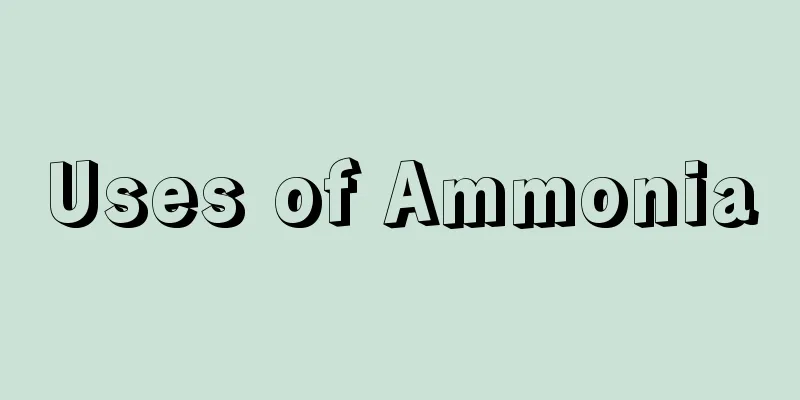Uses of Ammonia

|
There are many gases in our lives. When some gases are dissolved in water, they will become toxic. Ammonia is one of them. When ammonia is dissolved in water, its toxicity will cause certain irritation and strong corrosiveness to the human eyes, mouth, nose and skin. When working with ammonia, you must protect your body. Once a part of the body comes into contact with ammonia, you must go to the hospital for treatment in time.
Ammonia water, also known as ammonia water, is a water solution of ammonia, which is colorless, transparent and has a pungent odor. The melting point of ammonia is -77°C, the boiling point is 36°C, and the density is 0.91g/cm3. Ammonia is easily soluble in water and ethanol. It is volatile and has the general properties of some alkalies. Ammonia water is made by passing ammonia gas into water. Ammonia is poisonous, irritating and corrosive to the eyes, nose and skin, and can cause suffocation. The maximum allowable concentration in the air is 30 mg/m3. Mainly used as fertilizer. Industrial ammonia water is an aqueous solution containing 25% to 28% ammonia. Only a small part of the ammonia molecules in the ammonia water reacts with water to form ammonia monohydrate, which is a weak base that only exists in ammonia water. The freezing point of ammonia water is related to its concentration. The commonly used freezing point of 20% (wt) concentration is about -35°C. Neutralization reaction with acid generates heat. There is a risk of fire and explosion. Specific heat capacity is 4.3×103J/kg℃ (10% ammonia water) Question 2 Composition Supramolecular: NH3xH2O (there are 4 water molecules directly hydrogen-bonded around the NH3 molecule at the saturated vapor pressure, so x = 4). Among these four hydrogen bonds, the hydrogen bond N???HO, in which the ammonia molecule acts as a "proton acceptor" and causes partial proton transfer and exhibits weak alkalinity, is stronger. The other three hydrogen bonds OH-N, in which the ammonia molecule acts as a "proton donor" but has difficulty in proton transfer, are slightly weaker. In order to highlight the hydrogen bond NH-O that causes partial proton transfer and exhibits weak alkalinity, ammonia hydrates (mainly NH3-4H2O) are always abbreviated as NH3-H2O. Molecules: NH3, H2O, NH3?H2O Ions: NH4+, OH- and H+ Among them: H2O (more), NH3 (less), NH4+ (less), OH- (less), H+ (very little), NH3?H2O (more) [1]
volatility Ammonia water easily volatilizes ammonia gas, and the volatility increases with increasing temperature and prolonged storage time, and the volatility increases with increasing concentration. [2] Corrosive Ammonia water has a certain corrosive effect, and carbonized ammonia water is more corrosive. It is more corrosive to copper, less corrosive to steel, and less corrosive to cement. It also has a certain corrosive effect on wood. It is a hazardous chemical, hazard code 82503. Weakly alkaline The following chemical balance exists in ammonia water: NH3+H2O-NH3-H2O NH3?H2O-NH4+ +OHˉ(reversible reaction) ionization constant: K=1.8×10-5(25℃) Therefore, only a small part of ammonia molecules react with water to form ammonium ions NH4+ and hydroxide ions OH-, so it is weakly alkaline.
① It can turn colorless phenolphthalein solution into red, purple litmus solution into blue, and wet red litmus paper into blue. This method is often used in laboratories to test for the presence of NH3. ②Can react with acid to form ammonium salt. When concentrated ammonia water meets volatile acids (such as concentrated hydrochloric acid and concentrated nitric acid), white smoke will be produced. NH3+HCl=NH4Cl (white smoke) NH3+HNO3=NH4NO3 (white smoke) However, this phenomenon does not occur when encountering non-volatile acids (such as sulfuric acid and phosphoric acid). Therefore, this method can be used in the laboratory to test the presence of ammonia molecules in water. In industry, the weak alkalinity of ammonia water is used to absorb sulfuric acid industrial tail gas to prevent environmental pollution. SO2+2NH3?H2O=(NH4)2SO3+H2O(NH4)2SO3+SO2+H2O=2NH4HSO3 |
<<: Why does the corner of the eye make a sound when pressed
>>: What harm does ammonia water do to the human body
Recommend
Teach you four tips for taking a bath to maintain your health
1. Rub your face frequently to treat fatigue Many...
What are the medicinal properties of rice wine
Maybe we often drink some white wine and beer in ...
How to remove scale from an electric kettle
How to quickly and effectively remove the scale i...
How to remove black dental plaque
In our daily lives, we often have many bad oral h...
The main causes of endometrial cancer
The main cause of endometrial cancer is closely r...
What kind of wine is rice wine? Nutritional value of rice wine
There are differences in rice wine between the no...
How much does glioma surgery cost
How much does it cost to have a glioma surgery? I...
What are some good ways to prevent fibroids?
Although fibroids are a common benign tumor in li...
What are the folk remedies for lung cancer that have the effect of detoxification and dispersing nodules?
Lung cancer patients may suffer from blood stasis...
Symptoms of different types of melanoma
Like other diseases, melanoma has different types...
Tumor recurrence after surgery is a "time bomb". Here are two tips to help you defuse it!
There is no medicine that works immediately, espe...
Rectal cancer will basically invade surrounding tissues and organs
Rectal cancer will basically invade surrounding t...
Experts talk about the diagnosis method of esophageal cancer
Patients diagnosed with esophageal cancer need to...
How to remove the formaldehyde smell from new clothes?
People always don't pay much attention to the...
Some specific preventive measures for colorectal cancer
Colon cancer will greatly affect the patient'...









